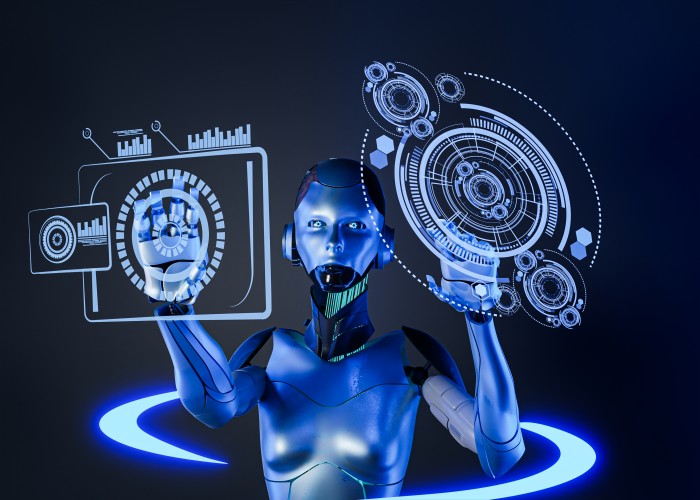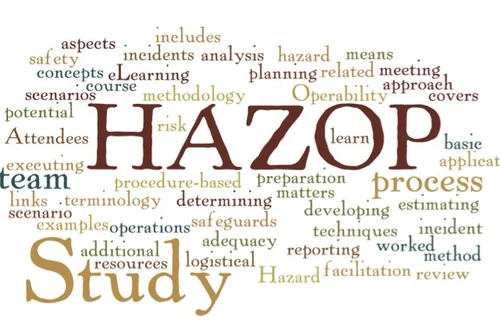How Artificial Intelligence is Transforming Industries in 2025
How Artificial Intelligence is Transforming Industries in 2025

Virtual Reality, autonomous cars, blockchain, ChatGPT, and metaverse—what do they have in common? They were specifically created through digital technology. The so-called fourth industrial revolution fuels the entire tech and IT space, and it is not surprising that Big Tech is one of the most valuable and critical verticals happening these days.
The single most tech that has been gaining more traction and attention recently is Artificial Intelligence or AI. AI stands at the forefront being a game-changer in almost different economic sectors, including the IT verticals. As reported by the National Research Group study, the ROI of Gen AI is commissioned through Google Cloud, forming a third of every firm which are still testing or assessing the Gen AI use cases. Today in our post, we will sneak peek into how AI is transitioning tech, stirring up things for all.
Artificial Intelligence and How it Works
Due to AI technology, computers today can learn through data and make appropriate adjustments. AI comprises creating models and algorithms, interpreting data, recognizing patterns, and growing through immense experiences. Machine learning and deep learning are the essence of AI, forming the two main pillars.
Using the algorithms with the potential to learn through data, deliver predictions or decisions is considered as machine learning. Both the supervised and unsupervised versions of the tactics are made available. The unsupervised learning makes use of the unlabeled data to recognize the patterns with supervised learning using the data labeled at the training an algorithm. Artificial neural networks are used across machine learning and deep learning. Such networks learn about the data as they are framed like the human brain. Deep understanding proves effective for the picture and speech recognition.
Applications of AI in Diverse Industries
Businesses today can use AI’s potential to achieve effective outcomes, especially through intricate planning and appropriate execution. AI has endless possibilities, and it is not astonishing that firms from every sector and industrial vertical are using AI tech to optimize their business processes and make smart decisions.
AI in Retail
AI tech effectively changes the manner in which stocks are retained, implementing bespoke suggestions to boost customer experience and provenly manage the supply chains. Moreover, warehouses are rapidly using the AI-powered robots to improve the order fulfillment and optimize the management of inventories. AI is being adapted to transform the way physical retail stores operate. AI delivers all the recommendations you find across any e-commerce websites.
But customer behavior prediction, product suggestions, and custom shopping experiences are the real perks of AI. It helps automate replenishing and pricing tasks, increasing supply chain management and inventory stocking. In a nutshell, online shopping is projected to find a brighter future based on AI tech’s constant innovation and adaptation.
AI in Financial Services
The financial service verticals stand at the forefront of attaining massive perks in the future with the adaptation of AI, unlocking the value across the areas such as risk management, detection of frauds, and customer service. But there are several challenges already existing that need to be addressed revolving around governance, regulatory compliance, and data privacy for understanding its real potential. Therefore, we find in most use cases in the vertical focusing on the notable cost savings instead of generating new revenue streams.
AI will become the emerging player as the main building block for developing services and products offering financial guidance and advice custom made for customers. While the financial verticals have transitioned into self-service reality, they have grappled over achieving the similar level of sales earlier. Here AI plays the pivotal part for transitioning the customer experiences, mainly online, streamlining things for customers to effectively manage the accounts and steer through the complex queries involving planning for retirement or choosing a mortgage loan to buy a property.
AI in Healthcare
AI can be effectively implemented to enhance diagnostics, customize treatment plans, and effectively manage patient data. While AI algorithms are capable of evaluating a massive array of data, healthcare providers can make highly informed decisions and boost patient outcomes. AI in healthcare is transitioning the way humans interact with medical professionals.
AI now aids in the rapid and accurate identification of diseases, pacing up and streamlining the discovery of drugs with monitoring patients with the help of virtual nursing assistants, especially due to the big data analysis capabilities. But, AI tech now finds a diverse array of applications in the verticals ranging from the diagnosis of diseases to the development of drugs.
AI in Media & Entertainment
The media and entertainment industry has defined this digital transition as a major shift from the conventional to turning out as media-tech firms for years. We are now making a shift to the next phase of this evolution, turning media-AI firms.
At the beginning of the year, we witnessed a “demo-palooza” across the media and entertainment industry. These individual teams experimented with AI organically without any top-down formal approach. It was noted that in the future, media and entertainment firms are more inclined to establish gen AI solutions with the potential to optimize the entire workflow.
AI in Manufacturing
AI has even proved effective in the manufacturing verticals over the years. The vertical adapted to the change of using AI powers through robotic arms using AI and other manufacturing dating way back to the 1960s and 1970s. The entire manufacturing process often uses the intricate machines. Furthermore, predictive analysis sensors make the equipment operate effortlessly with the industrial robots, generally collaborating with the humans, performing a smaller array of tasks such as assembly and stacking.
AI in Education
Parents and younger generations are changing, and we know how vital Education is to them. So, everyone is invested in getting the highest Education possible. AI is giving way to personalized learning experiences and enhanced student outcomes. AI-powered chatbots have the potential to answer students’ questions while giving feedback in real time.
Artificial intelligence (AI) by the various technologies of machine learning, natural language processing, and face-recognition can perform some of the tasks, like digitizing textbooks, detecting plagiarism, etc., and work on the emotionality of the students to help identify the places where the students are facing issues. AI does save teachers a lot of time in performing certain repetitive tasks, allowing them to focus on what really matters. Marking tests automatically, assigning homework, filling up paperwork, and organizing teaching materials.
Benefits of AI for B2B
AI technology implementation has a huge impact on B2B companies. Based on the 2024 DataCamp’s State of Data & AI Literacy Report, over 550 business leaders have spoken: The most noticeable benefits seen by leaders in organizations that would foster such an AI literacy in their teams for sure deal with faster decisions, 76%; improved decision making, 75%; better innovation, 75%; improved customer experience, 65%; decreased costs, 66%; and increased revenue, 64%.
Improved Decision-making
Using such technologies, AI tools perform predictive analyses, recognize patterns and can also perform sentiment analyses, thus allowing insights from real-time data for data-driven decision-making. AI tools, therefore, take with it the possibility to offer much deeper insights into a much larger, close to-beastly, chunk of the information in a faster time-frame.
Multiple modeling techniques in machine learning make predictions about trends, customer demands, and consumption rates for a company’s supply chains. AI will yield ahead of the change, preparing the market for this change. AI eliminates the power of human errors or bias; thus, decisions will be made in a much more objective and accurate way, providing the company an edge against its rivals.
Operational Efficiency
So, regarding AI technology, proactive machine learning models can be applied to track and enhance the complete automation of repetitive material. For instance, AI can directly usurp lengthy workflows like inventory management, data entry, or work schedule planning, which takes much less time and effort.
AI is implemented for optimization processes, which is going to detect the bottlenecks and inefficiencies in supply chain management, manufacturing & logistics, or possible savings that can be generated. These linearization benefits can leverage nearly poly-planetary through almost all key functions in just about all businesses — across human resources and accounts through manufacturing, customer care, and in implementing capital cost savings and rapid turnaround and productivity.
Enhanced Customer Experience
As such, AI can easily analyze vast volumes of customer data and provide actionable insights about customer preferences, behaviors, and needs. This allows businesses to develop personalized experiences through targeted product recommendations and bespoke marketing campaigns, all of which together lead to greater satisfaction and loyalty among customers.
AI-powered chatbots, AI contact centers, natural language processing tools, and virtual assistants deliver round-the-clock customer service, providing instant and accurate answers to customer questions.
AI also offers omnichannel engagement, which means integrating customer touchpoints across platforms like an excellent website, social media, and email to provide a seamless and consistent experience. It helps companies retain their customers and build long-lasting relationships by providing tailor-made solutions at the right time.
Future Trends in AI Technology
The importance of AI is set to grow, and the evolving pace of AI technologies and applications in various market sectors is another factor. That being said, AI will remain a critical skill for the individual, enterprise, and society. Below are some of the trending prospects in AI technology.
AI and IoT Integration
AI and IoT are two concepts very closely intertwined with one another in diverse domains. IoT incorporates the digital interconnection between multiple (tech) physical systems. Examples of IoT systems are smart homes and smart cities. The interdependence of AI and IoT increases the capability for smart interaction with the physical surroundings by collecting sensory data of various types and processing it for human-like decisions to be made autonomously in an environment.
AI in Edge Computing
The strength of AI is often hidden behind the cloud, yet that is changing with edge computing. Edge AI is the implementation of AI models and algorithms that run directly on edge devices. These devices are on the edge of the network, close to where the data is generated and real actions are to be deployed. Minimal and efficient language models, like GPT-4o Mini, Llama 3.1 8B, and Gemma 2 2B, have all made the shift to edge AI even faster.
Emerging AI technologies
Emerging AI is an enabling technology for digital transformation and a requirement for emergent technologies like quantum computing, autonomous systems, and robotics.
Conclusion
AI is, inarguably, a revolutionary technology, and, by some estimates, nearly two-thirds of surveyed companies already plan to include it in their arsenal to improve practices and make better-informed decisions. As these systems become smarter, firms experienced and knowledgeable in AI tools and their applications are very likely to be miles ahead of their competitors. They help ensure application development that involves deployment of AI algorithms, machine learning models, as well as techniques for analysis of the data, which provide personalized experiences, optimization of processes, and enhance customer delight.







